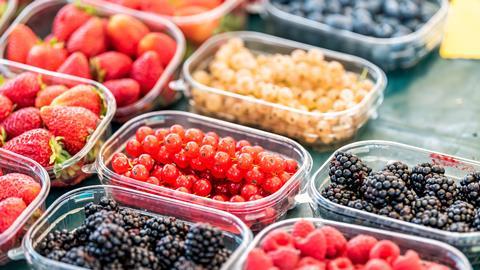Fresh produce industry expected to mount ‘legal challenge’ against PPWR, which singles out plastic packaging for fresh fruit and vegetables but leaves other food categories unaffected
The European Parliament and Council have reached a provisional agreement on revamped rules to reduce, reuse and recycle packaging.
According to the European Commission, the new measures – known as the Packaging and Packaging Waste Regulation (PPWR) – will increase food safety and boost the circular economy.
They aim to make packaging used in the EU safer and more sustainable, by requiring all packaging to be recyclable, minimising the presence of harmful substances, reducing unnecessary packaging, boosting the uptake of recycled content and improving collection and recycling.
However, revisions to their original proposal have swapped an initial ban on all single-use packaging for fruit and vegetables with a more focused ban on plastic packaging only.
As reported earlier today, industry leaders say the rules will do enormous damage and unfairly singled out the fruit and vegetable industry. They also argue it will increase food waste, restrict consumer access to healthy food, and have little material impact on overall rates of recycling.
Philippe Binard, general delegate of industry association Freshfel Europe, told Fruitnet the ban was poorly conceived, discriminatory, and probably illegal.
“We don’t see a reason to ban packaging for fruits and vegetables, specifically not plastic packaging for fruits and vegetables,” he said. “There is no impact assessment. If [Parliament and Council] come to an agreement, there will be legal cases challenging that proposal for sure.”
The agreement, which the Parliament and Council need to approve formally before it can enter into force, sets packaging reduction targets of 5 per cent by 2030, 10 per cent by 2035, and 15 per cent by 2040. It also requires EU countries to reduce, in particular, the amount of plastic packaging waste.
According to the deal, a number of different single-use plastic packaging formats, including packaging for unprocessed fresh fruit and vegetables, would be banned from 1 January 2030.
The negotiators agreed that all packaging should be recyclable, fulfilling strict criteria to be defined through secondary legislation. Certain exemptions are foreseen for lightweight wood, cork, textile, rubber, ceramic, porcelain or wax.
Other agreed measures include minimum recycled content targets for any plastic part of packaging; and minimum recycling targets by weight of packaging waste generated and increased recyclability requirements.
Rapporteur Frédérique Ries, commented: “For the first time in an environmental law, the EU is setting targets to reduce packaging consumption, regardless of the material used. We call on all industrial sectors, EU countries and consumers to play their part in the fight against excess packaging.”
Photo: Adobe Stock
Topics
- Austria
- Belgium
- Berries
- Bulgaria
- Croatia
- Cyprus
- Czech Republic
- Denmark
- Dried fruit and nuts
- Environment
- Estonia
- Europe
- Finland
- Food waste
- France
- Fruit
- Germany
- Grapes
- Greece
- Health
- Hungary
- Ireland
- Italy
- Latvia
- Lithuania
- Luxembourg
- Malta
- Netherlands
- Packaging
- Poland
- Portugal
- ppwr
- Romania
- Salad vegetables
- Slovakia
- Slovenia
- Spain
- Sustainability
- Sweden
- Vegetables




